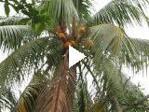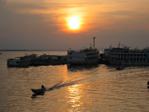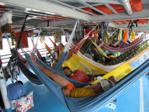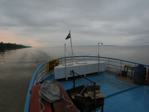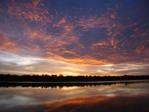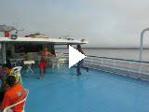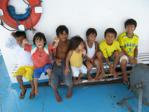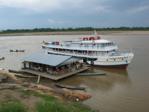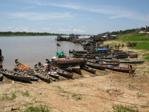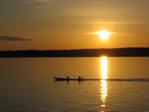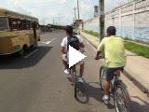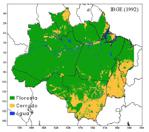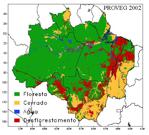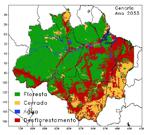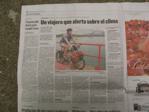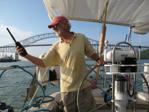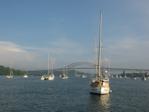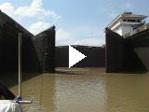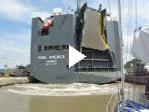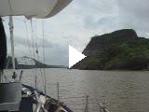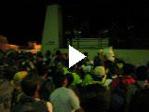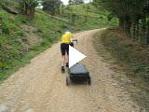From Yurimaguas, in the Peruvian Jungle, I followed dirt roads south and planned to cross into the Andes through the national park Rio Abiseo. Arriving in the town of Juanjui, near the park, I learned that my map had lied to me. The road did not exist.
My map also showed a road further to the south crossing into the Andes. This road was thicker on the map, so I had higher hopes for it. Before traveling, though, I first visited a school in Juanjui and spent the day at the fire station.
Continuing south, I entered a region where helicopters were constantly flying overhead. I soon learned that the helicopters were paid for by the U.S. government, and were flying to look for coca plants to eradicate (coca plants are the source of cocaine, and the coca plant can be found only in the foothills of the Andes). While large scale coca farming has been largely eradicated in this region, the plant grows naturally, and the plant can still be found everywhere. For instance, on the right is a picture of a healthy coca plant with smiling children just 200 feet from the main road. (After taking this picture, one of the locals offered me coca leaves. “Chew on these while you bike, and you won’t get tired or hungry”).
The eradication has hit the local economy hard. A hotel I stayed at in Tocache was nearly empty, and I was told it was full a year ago. I camped on a farm of a man who grows coca – “nothing else here makes any money” he told me, and then told me everyone was waiting for the helicopters to go away so they could grow more coca. This region is poor, and eradication has made it poorer — outside the cities there is little electricity, and some people I stayed with work with a machete for $3 a day. On the other hand, one farmer I talked to said that although he had less money, he was more relaxed, ”with all the drug traffickers there was a lot more crime.” (Indeed, it would not have been safe for me to travel here a year earlier.)
Turning into the mountains, I learned my map had lied to me again. The road to Huacrachuco was under construction, and I either had to rent a horse or keep biking south. To see what I did, wait till the next entry, or go here.
Thanks to the bomberos of Yurimaguas, Tarapoto, and Juanjui, who helped me out and even gave me my own bombero uniform (photo center and right). I also attended my first fire in Juanjui — a palm tree on fire from a lightning strike, which eventually went out from the rain (video below).





